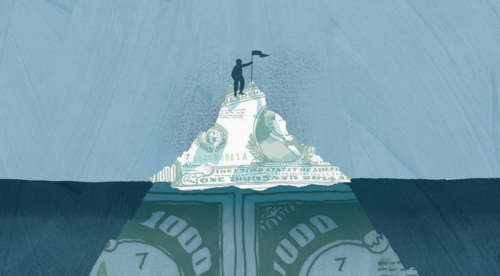Maryn Cannon
Category: Strategy
03.27.2018
Digital Advertising
EMarketer: Facebook, Google Duopoly Under Pressure as Ad Sales Jump for Amazon, Snapchat
Facebook and Google will receive a combined 56.8% of U.S. digital ad investment in 2018, a decrease from 58.5% last year, as Amazon and Snapchat experience growth. The leaders’ share of new digital ad revenue is also declining and is expected to reach 48% this year, down from 73% in 2016, according to eMarketer forecasts. Amazon’s U.S. ad revenues are expected to jump 63.5%, surpassing $2 billion for the first time. Snapchat’s ad revenue is forecast to grow 81.7% in 2018, reaching $1 billion for the first time.

Given Amazon’s access to unique purchaser data and Snapchat’s access to a difficult-to-reach younger audience, these platforms are well-positioned for a takeover. This significant shift in ad spend points to the dynamic nature of the digital advertising market. We predict that marketers will benefit from this shift, as their bargaining power will increase as more viable advertising options emerge.
Digital Marketing
3 Reasons Why B2B Digital Advertising Has Reached the Tipping Point
Recently, eMarketer revealed its first business-to-business digital ads forecast, estimating that the space will total $4.6 billion in 2018, up 13 percent from last year’s $4.07 billion. And when comparing this year’s forecast to 2013, B2B digital ad budgets will have grown by 111 percent in only five years. These numbers are important because they highlight how business-to-business marketing is quickly becoming a digital player’s game. B2B has officially reached its adapt-or-die scenario that consumer-facing brands have come to grips with in recent years.

eConsultancy research shows that 33% of the business customer’s journey happens online, prior to any interaction with a sales representative. This statistic highlights the importance of building and maintaining a strong digital presence in not only acquiring new customers but also satisfying and maintaining current customers.
Marketing Analytics
Transparent Ad Targeting Boosts Engagement by 40%, Study Finds
When marketers are transparent and communicate how they are using customer data to target ads, they see an increase in customer engagement and purchasing, according to the Harvard Business Review. The study looked at consumer reactions to marketers’ use of personal data in two experiments using varying language on a website product detail page. In the first experiment, half of the audience saw “recommended” items, and the other half saw a more transparent message: “recommended based on your clicks on our site.” The more transparent language increased click-through rates by 11%, time spent on product pages by 34% and consumers spent 38% more on the recommended items.

Consumers are becoming increasingly aware that their data is being used by marketers and have demonstrated a growing distrust towards targeted brand marketing. Consumers view marketing transparency as a sign of honesty and this builds the foundation for a strong (and profitable) relationship. Moreover, when consumers are told they are benefiting from the brand’s possession of their personal information, they feel more inclined to share information in the future. Overall, ad transparency leads to a strong and sustainable brand-consumer relationship.